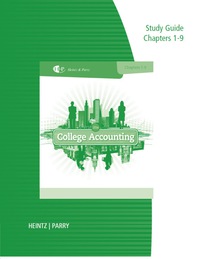23 Zonal Solutions manufactures fire retardant used to keep flames from spreading in forest fires. The retardant creates a chemical fire break and is dropped from large aircraft called water bombers. The mix consists of 85% water, 10% salts (typically fertilizer), 5% minor ingredients, and a colorant to make the retardant visible so pilots can see where earlier drops were made and accurately aim subsequent drops. Zonal's plant, where the retardant is made, consists of two departments, Blending and Milling: In the Blending Department, the raw materials, in powder form, are thoroughly blended together and a thickener is added to hold the fire retardant together so it isn't dispersed by winds when dropped from the water bomber. In the Milling Department the mixture is milled into finer particles to assist with mixing it with water. The product is then packaged and sent to water bomber bases. The following information provides further details relating to Zonal's production process. Zonal's annual capacity for fire retardant: (all in kilograms) Blending Milling Department Department Annual capacity I 5,000,000 4,500,000 2020 production 4,500,000 4,500,000 The cost of direct ingredients is $1.50 per kilogram. All direct ingredient cost is added in the Blending Department. As there is a high demand for Zonal's fire retardant, it can sell as many kilograms as it produces at a selling price of $3.25 per kilogram. Annual fixed costs of operations: Blending, $1,850,000, Milling. $985,000 Required a. Quality: Due to the high demand for its product, the production manager is concerned with capacity management and quality. Assuming any defective kilograms produced in either Annual fixed costs of operations: Blending, $1,850,000, Milling, $985,000 Required a. Quality: Due to the high demand for its product, the production manager is concerned with capacity management and quality. Assuming any defective kilograms produced in either department must be destroyed, she would like you to compute the following: i. The loss that occurs, per kilogram of fire retardant if it must be disposed due to a defect in the Blending Department. (1 mark) ii. The loss that occurs, per kilogram of fire retardant if it must be disposed due to a defect in the Milling Department. (1 mark) iii. Quality costs: 1. State in which of the four costs of quality categories the cost of defective units would be classified. (2 marks) II. Which cost of quality category do you recommend Zonal focus on to reduce this cost in the future? Why? (3 marks) b. To address the demand, the plant operations team is looking at two short term options to increase plant capacity for the next year. They present you with the following (6 marks): i. Alternative 1: The company's design engineer has a proposal from Allkinds Milling, a local milling operation, with additional capacity to mill and package 400,000 kilograms of fire-retardant powder per year. The company would charge $1.20 per kilogram to do the milling and packaging. After the powder was mixed at Zonal's plant it would be transferred by a trucking company to Allkinds' plant for $6,500 per month. Calculate the net benefit/loss of this option. ii. Alternative 2: The operations manager has found a way to increase the capacity in the Blending Department by renting additional blending vats from Vats Unlimited. The annual cost of renting these vats would be $125,000. The operations manager is particularly interested in this arrangement over Option 1 as it could increase the department's capacity by 500,000 kilograms without increasing the variable cost. Calculate the net benefit/loss of this option










